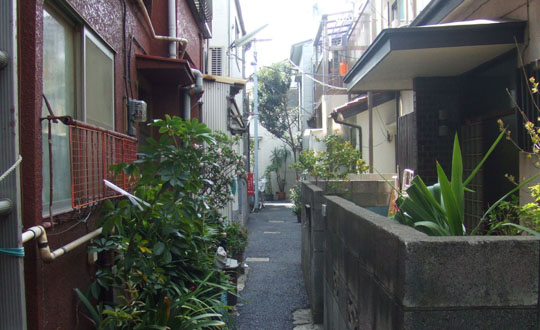The neighborhood of Minami Senju in Tokyo's Arakawa Ward is serviced by three train lines that provide easy, quick access to all parts of the city and beyond. East of these lines is an area called Shioiri, highlighted by a relatively new urban development complex centered around high-rise condominiums and rental apartments. To the west is a cramped maze of narrow, winding alleys lined with small wooden structures. Though surrounding areas are undergoing change in the usual makeshift Tokyo fashion, this patch of shitamachi, the "low town," remains much the same as it has been since the end of World War II — a mish-mash of small businesses and residences oblivious to zoning or any other notion of city planning.
On a recent afternoon, we dropped in on Yoshii Ishii, who leads the Minami Senju Chuo neighborhood association. Eighty-three years old, Ishii moved here from Fukushima Prefecture in the late 1940s and started a small construction company. We mention the Tokyo Metropolitan Government's plans for rebuilding neighborhoods like his, which are at high risk in disasters. He says the residents are aware of the plan, but most of them are very old.
"All we can do is make sure we don't start any fires," he says. Just the night before, the association met with police and the owners of four nearby high buildings to gain permission for residents to evacuate to those buildings in the event of an emergency. When asked if any of his neighbors have actually rebuilt their homes to make them more fire- or quake-proof, or if there are any plans to widen roads in the community, he becomes circumspect.


















With your current subscription plan you can comment on stories. However, before writing your first comment, please create a display name in the Profile section of your subscriber account page.